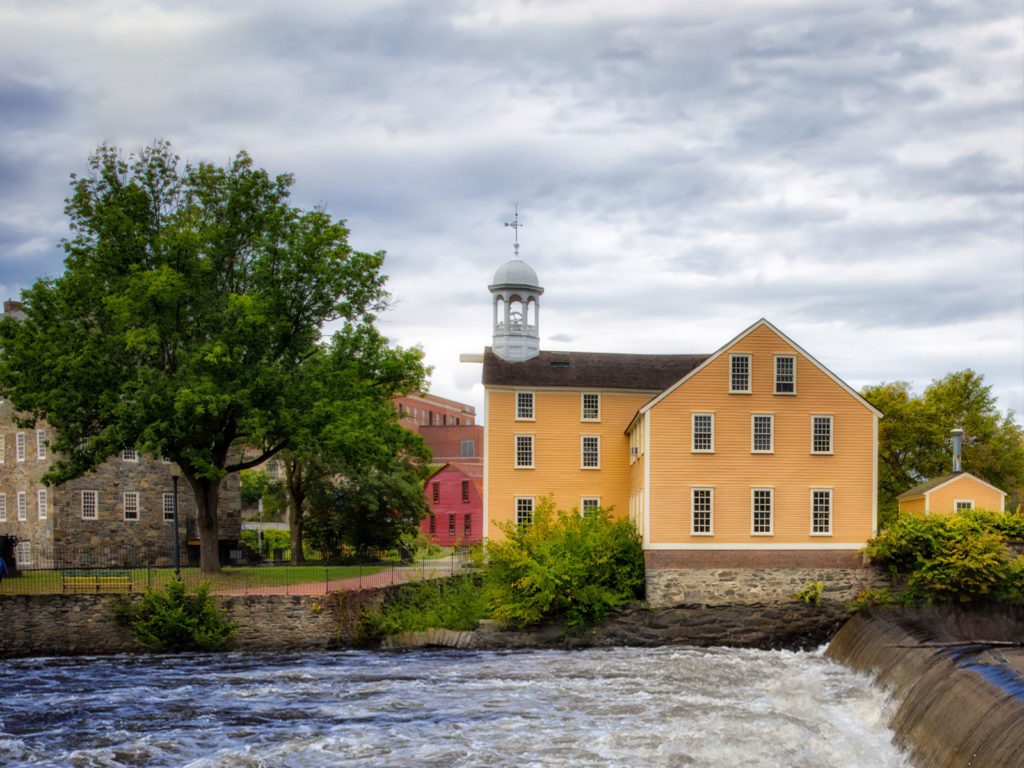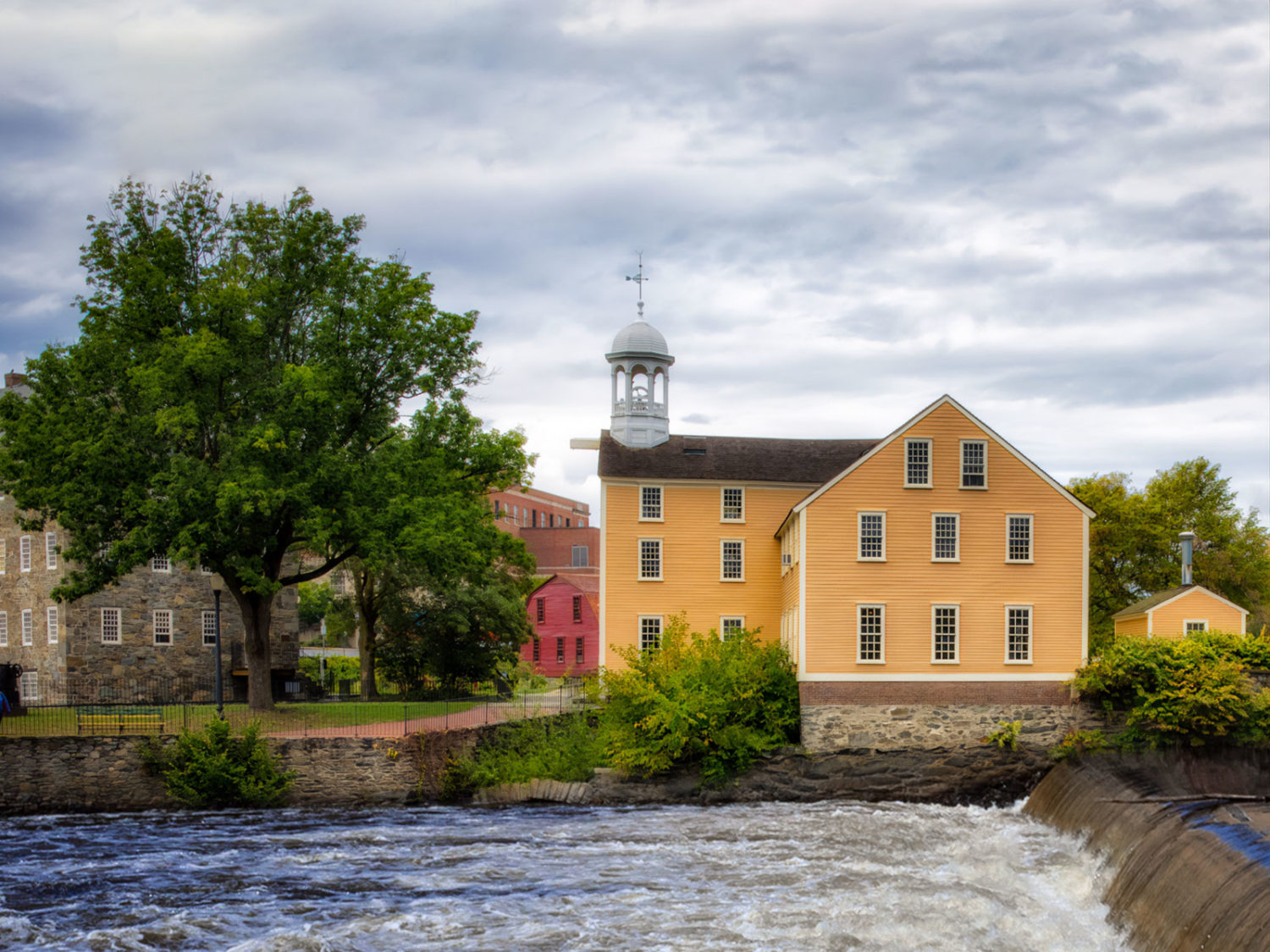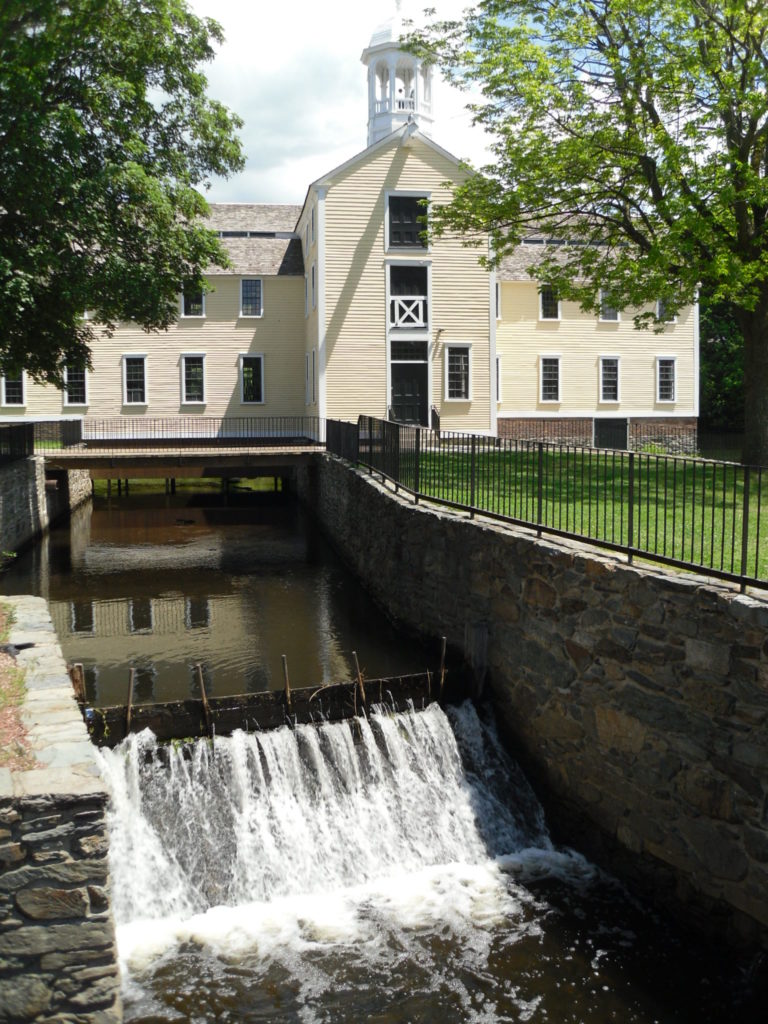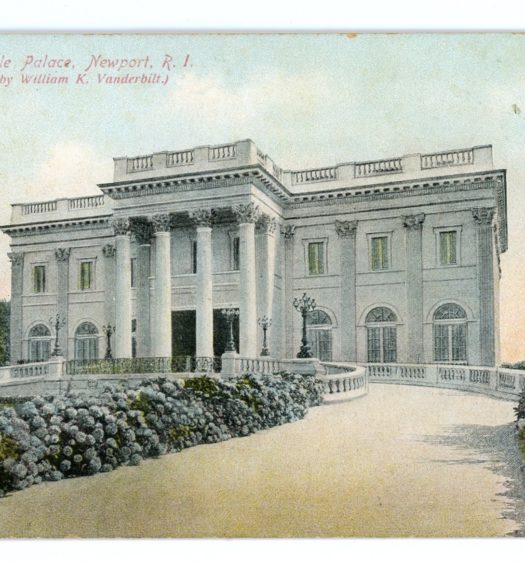Did you know that Slater Mill, one of the most important historic sites in Rhode Island, was transferred in March 2021 to the U.S. National Park Service? I am embarrassed to say that I did not know that, until a few weeks ago.

Looking across the Blackstone River in Pawtucket with the Wilkinson Mill building on the left the Sylvanus Brown House in the middle and the Slater Mill building on the right (National Park Service)
Here is a short summary (perhaps too short) of the story behind Slater Mill. Samuel Slater, an English immigrant who worked with newly-invented water-powered textile mills in England, was hired by Moses Brown, one of the famous Brown brothers of Providence. A group of investors led by Moses Brown, including Slater, built a new cotton mill nearby at what is now Slater Mill, powered by water flowing from the Blackstone River. Slater’s machines produced the first cotton thread in August of 1793 and Slater Mill became the first successful water-powered cotton-spinning mill in North America. Five years later, Slater partnered with the Wilkinsons to build across the river White Mill, which became the inspiration for other mills, first throughout the Blackstone Valley and eventually all over New England. In 1803 Slater and his brother John built a mill village in North Smithfield they called Slatersville (now an historic district). Slater developed the “Rhode Island System,” in which entire families, including women and children, were hired, and often lived in company housing, shopped in the company store, and attended company schools. Slater is considered the father of American industry. Rare for an inventor, he became wealthy as a result of his businesses. He spent a considerable amount of time in Rhode Island, after marrying in 1791 Hannah Wilkinson of Pawtucket, who invented a type of cotton sewing thread and in 1793 at the age of nineteen became the first American woman to be granted a patent.
The Old Slater Mill Association had owned the land and buildings of Old Slater Mill National Historic Landmark District since the 1920s. The site includes the distinctive yellow-clapboard Slater Mill (1793), the Sylvanus Brown House (1758), and the Wilkinson Mill (1810-1811).
The nonprofit Old Slater Mill Association was founded in 1921 for the purpose of preserving Slater Mill. Efforts to restore the mill to its 1835 appearance began in 1923. In 1955, it opened as a museum. The restoration of the Wilkinson Mill was completed in 1978. The Sylvanus Brown House was moved to the site in the 1960s. The district includes waterfront Hodgson-Rotary Park and Slater Mill Park. Slater Mill was added to the National Register of Historic Places and designated a National Historic Landmark on November 13, 1966, reportedly the first property to be listed on the register.
The effort to transfer Slater Mill to the National Park Service has been in the works for some time. In 2011, a report by the Corridor Commission recommended the Blackstone Valley corridor for national park status. Rhode Island U.S. Senator Jack Reed wrote a 2014 law that Congress passed directing the National Park Service to establish the Blackstone River Valley National Historic Park and as part of that effort to acquire Slater Mill. In December 2014, Slater Mill was formally added to the newly-formed Blackstone River National Historic Park, which was created for the purpose of preserving, protecting and interpreting the industrial heritage of the Blackstone River Valley (called “the Valley” below) in parts of both northern Rhode Island and southwestern Massachusetts. The Valley was the site of some of the earliest textile mills in the United States, which contributed significantly to the Industrial Revolution in America.
The Blackstone River National Historic Park became the second National Park in Rhode Island. There is also the Roger Williams National Memorial that commemorates the life of Rhode Island’s founder and champion of religious freedom, Roger Williams. (It is called a Memorial and its site is small, but apparently it is considered a National Park).
A website describing the activities of the Old Slater Mill Association states that prior to the transfer of the site to the National Park Service, Slater Mill was visited annually by 10,000 school children, as well as 25,000 adult and family visitors. Perhaps you visited the site as a schoolchild.
The Old Slater Mill Association did a terrific job over the last century preserving Slater Mill and making it a great place to visit and experience American history. Next week, Old Slater Mill Association’s Executive Director for the last seven years, Lori Urso, will have an article on our website describing the association’s founding by Simon Willard Thayer in 1921.
The transfer of the Old Slater Mill National Historic Landmark District to the National Park Service means that funds should always be available to preserve the site. It can also be integrated into the larger Blackstone Valley National Historic Park. National Park Service rangers will be giving tours, and the tours will either be free or a small fee will be charged. On the other hand, the site will be subject to federal limitations that apply on a national level, including Covid-19 restrictions.
At the time of this writing (July 23, 2021), the National Park Service said the following:
- The Park grounds are open to the public.
- The Slater Mill in Pawtucket is open for basic visitor services at this time. The visitor services are offered Thu-Sun, 10:00 AM to 3:00 PM.
- Tours of Slater Mill are offered at 11:00 AM and 2:00 PM.
The following is the National Park Service’s news release announcing the transfer of the Old Slater Mill National Historic District to the National Park Service.
News Release Date: March 31, 2021
Contact: John Warren
Pawtucket, R.I. – The National Park Service has acquired the Old Slater Mill National Historic Landmark District. NPS staff, in cooperation with the Old Slater Mill Association, completed the transfer of the property to the Blackstone River Valley National Historical Park this week.
The birthplace of the American Industrial Revolution, Slater Mill is a place of national importance where visitors can come to contemplate the many ways in which the nation changed as a result of the Industrial Revolution.
“We are honored to become the stewards of this incredibly important National Historic Landmark,” said Park Superintendent Eric Breitkreutz. “We look forward to working with our partners, the Old Slater Mill Association and the City of Pawtucket, to continue the public interpretation of this seminal historic site on the banks of the Blackstone River.”
The National Park Service will now own and operate the three historic buildings on the property, including the 1793 Old Slater Mill, the 1810 Wilkinson Mill, and the 1758 Sylvanus Brown House. Also included in the transfer are the approximately three acres of land surrounding the structures, that include the raceway infrastructure for both mills and Hodgson Rotary Park on the west bank of the Blackstone River.
“For 100 years the Old Slater Mill Association has served as the caretaker for the history and historic fabric of this national treasure,” stated National Park Service Interior Region 1 Regional Director Gay Vietzke. Vietzke continued, “we at the National Park Service will be proud to carry on their fine tradition of preservation and education for the next 100 years and beyond at the Old Slater Mill.”
The National Park Service also recently accepted a conservation easement on a portion of the Blackstone River State Park in Lincoln, Rhode Island from the Rhode Island Department of Environmental Management. This agreement will bring segments of the Blackstone Bikeway, a contiguous section of the historic Blackstone Canal, and the Captain Wilbur Kelly House Museum of Transportation into the National Historical Park’s boundary.
In addition, four local historic districts have been established in four unique mill villages in the Blackstone River Valley. The Ashton Historic District in Cumberland, Rhode Island, the Slatersville Historic District in North Smithfield, Rhode Island, the Whitinsville Historic District in Northbridge, Massachusetts, and the Hopedale Historic District in Hopedale, Massachusetts all protect critical resources in the Valley. Mill Villages were a pivotal part of manufacturing in the Blackstone Valley, providing housing and a sense of community for the workers.
These acquisitions and historic district creations are major steps towards the realization of a National Park Service unit in the Valley. They will help to ensure the protection of these sites in perpetuity and will allow the National Park Service to develop interpretive programing that highlights the importance of Slater Mill and the Blackstone River Valley on a national stage.
Here is a link to the National Park Service’s website page for Slater Mill, as part of the Blackstone River Valley National Historic Park: https://www.nps.gov/blrv/learn/historyculture/slatermill.htm


























